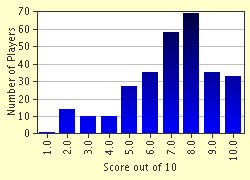Quiz Answer Key and Fun Facts
1. The dog days of summer seem to last for a very long time, until cool fronts arrive to break the high heat and humidity. Where do most of the cool and cold air masses that influence the Central Great Plains come from?
2. As with most of the US east of the Rocky Mountains, the Wichita area obtains most of its moisture from the Gulf of Mexico. However, especially during the fall season, moisture occasionally arrives from which surprising source?
3. Those refreshing cool fronts of the fall eventually turn colder, bringing frosts, freezes, and winter precipitation. However, the cold air in the Plains can be extremely shallow, leaving Wichita in frigid temperatures while keeping this Rocky Mountain city in a neighboring state in relatively balmy conditions.
4. When the winter storm track is not active, cold high-pressure sytems tend to settle over the Great Plains, and the weather pattern becomes stagnant. This stable pattern, with all the cold air in place, encourages the development of this weather phenomenon over a large portion of the Plains--a phenomenon more typically associated with London or San Francisco.
5. Winter can be a dry season in the Central Great Plains, but Pacific storms that hit the California coast can travel through the Rocky Mountains and "tap into" the moisture from the Gulf, emerging into the Plains re-energized. What kind of precipitation does Wichita see from these winter storms?
6. Prolonged snow events occur in Wichita when Gulf moisture wanders northward and overrides cold air in place over the Great Plains. This situation often develops when this type of front is aligned east to west to the south of Wichita, across the state of Oklahoma.
7. March weather in Kansas is very changeable, but the warming conditions signal the arrival of spring and the beginning of the tornado season. Other states in Tornado Alley have sustained more damage or report a higher density of tornado events per unit area, but Kansas has gained lasting fame as a favored target of tornadoes, thanks to which well-known book and movie?
8. In the late winter and early spring, warmer temperatures are sometimes brought in by strong winds blowing in from the southwest. These winds travel over large tracts of bare ground left behind by melting snow and not yet protected by grass. As a result, solid particles are brought into the air and darken an otherwise sunny sky. These particles include:
9. Tornadoes are obviously a major concern in Wichita during the spring months, and several measures are used to warn people about incoming severe weather. These measures include:
10. As spring gives way into summer, cool-air incursions become few and far between, and temperatures in Wichita often soar above 100 deg F. However, this does not mean the end of the storm season, as the plentiful Gulf moisture in the area needs only the appropriate catalysts to trigger powerful thunderstorms. These catalysts can include:
Source: Author
traderider
This quiz was reviewed by FunTrivia editor
crisw before going online.
Any errors found in FunTrivia content are routinely corrected through our feedback system.

